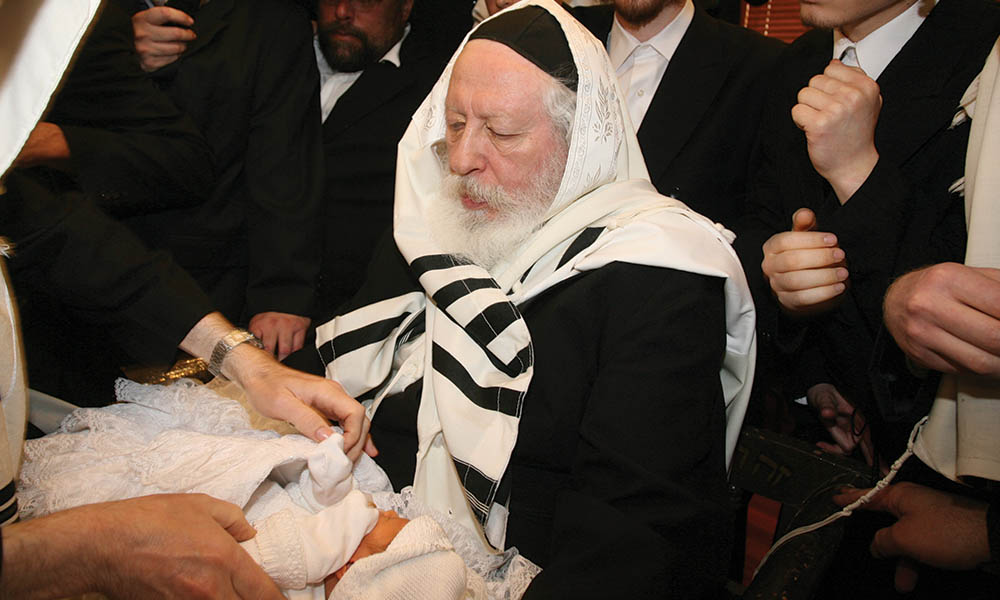On two evenings in late May, the streets of Jerusalem were once again the scene of violent riots. Incensed mobs threw stones, glass bottles and punches, upending cars, vandalizing property and littering the streets with debris. Victims, including a police officer, were hospitalized, and police were forced to use water cannons and to rescue elderly Rabbi Shaul Alter, head of the Hasidic breakaway group that was the target of the violence. Instead of the usual political or ethnic opponents, both sides of this conflict were black-garbed, fur-hatted Gur Hasidim.
Far from being a fringe group whose battles affect only themselves, Gur Hasidim are the largest and wealthiest Hasidic group in Israel, well acquainted with Israel’s halls of power. MK Yaakov Litzman, a Gur Hasid with no secular education, was Israel’s minister of health until 2020; he handled the COVID crisis disastrously and resigned his Knesset seat last month as part of a plea deal on charges of fraud and breach of trust. MK Moshe Gafni, another Gur Hasid, until 2021 chaired the Knesset’s Finance Committee, which oversees
the country’s budget.
The Gur dynasty, founded in Gora Kolwaria, Poland in 1859 and almost eradicated during the Holocaust, was reestablished by Avraham Mordechai Alter, who escaped to Jerusalem and continued as grand rabbi after his acolytes reportedly ransomed him from the Nazis for a huge sum. While other haredi groups promoted scholarship as the road to holiness, under Alter’s leadership Gur enacted ever more stringent
takanot—unwritten rules passed on by word of mouth—sharply increasing the limitations on relations between the sexes. Even the most innocent contact, such as at family meals, was forbidden, with women shunted off to another room. Men were told to take off their glasses so as not to see women on buses. Married couples were forced to share every detail of their intimate lives with assigned rabbis and special “counselors.”
Forbidden any contact except twice-monthly sexual relations for a few minutes in the dark, they were not allowed to hug, kiss or sit or walk together. Husbands were even forbidden to call out their wives’ names, instead rapping on the table for their attention.
Until 2016, these stringencies were largely kept secret. But when Esti Weinstein—a wife, mother of seven and former Gur Hasid—committed suicide, she left behind a book describing her married life. A former member of the community told Ynet reporter Tali Farkash: “I know women who after sex with their husbands lie in bed and want to cut their wrists.” Others said powerful psychiatric drugs were often forced on those who found it difficult to comply with these rules.
The public airing coincided with the explosion of a long-simmering conflict between the community’s current Grand Rabbi Yaakov Aryeh Alter and his cousin, Rabbi Shaul Alter. Half a century ago, Yaakov inherited the mantle of leadership, while Shaul, though considered the rightful heir by some, became the head of Gur’s yeshiva. In 2016, after years of interference in the yeshiva’s study methods, Rabbi Yaakov finally ordered it closed. In 2019, the more popular Rabbi Shaul left the main Gur synagogue during Simchat Torah, taking hundreds of his followers with him. Threatened with the expulsion of their children from Gur schools, Rabbi Shaul’s followers defiantly raised millions of dollars through crowdfunding, setting up rival schools and synagogues.
Alarmed by the number of defectors—particularly the small but financially significant branch of Gur in New York—Rabbi Yaakov’s Gur establishment changed tactics. One couple, Tzvi and Leah Sandik, who had left the community with their unmarried children while the married ones remained, went to the police in February to charge that Gur had kidnapped two of their daughters—14-year-old Riki and 17-year-old Esti. Lawyers representing Gur Hasidim denied any wrongdoing, saying that “this is an internal family problem which has nothing at all to do with [Gur].” Eventually, the girls ended up in a non-Gur foster family.
The couple told Ynet that since the split, Gur educational institutions have done everything in their power to cut children off from their parents lest they join the rival group, teaching them that their first loyalty must be to the grand rabbi, not to their parents, who are compared to “Korach,” the famous biblical rebel against Moses who was swallowed up by the earth.
The May riots erupted after the Sandiks reportedly brought a megaphone to a Tel Aviv cemetery during a visit by Rabbi Yaakov and publicly begged him to help bring their daughters home. The grand rabbi, incensed by the “insult,“ allegedly then gave his Hasidim the green light to take unrestrained revenge on the defectors once and for all. One can only hope that these public riots will instead lead to a mass exodus of victims subject to Gur’s draconian rules, as well as helping the rest of us Israelis to suffer less from their exaggerated political power.
Naomi Ragen is a novelist living in Zichron Yaakov, Israel.

